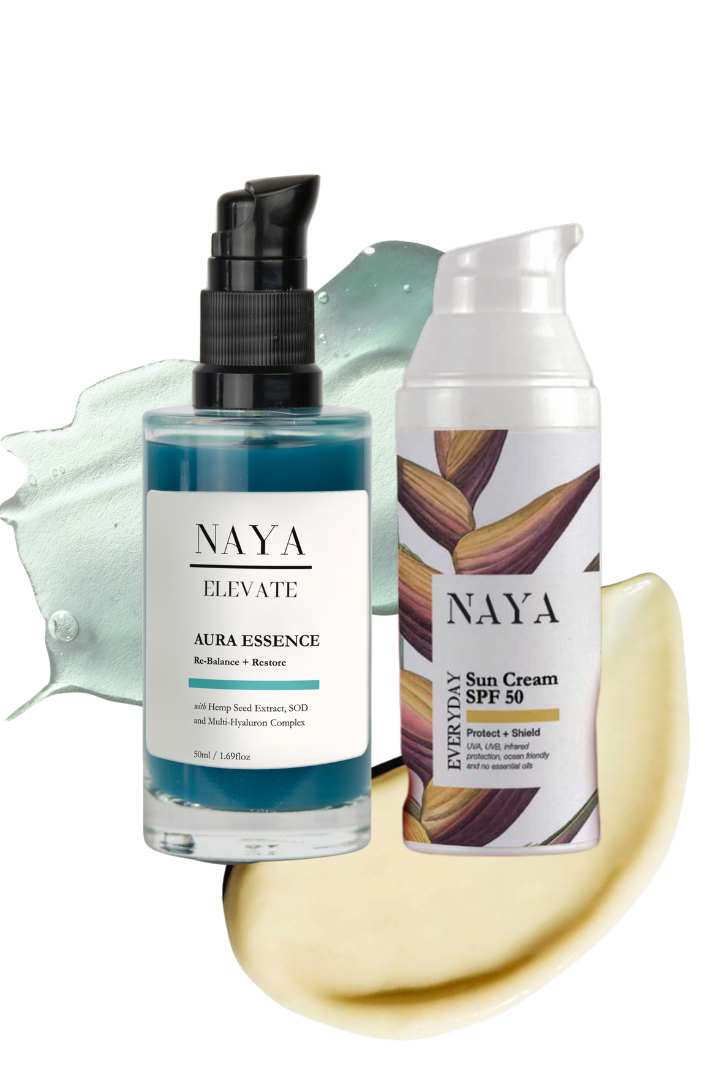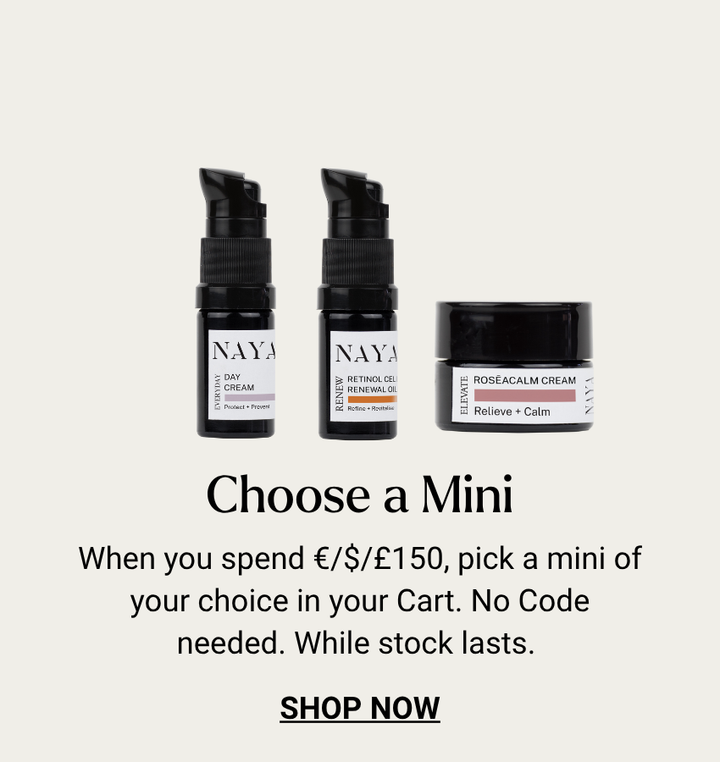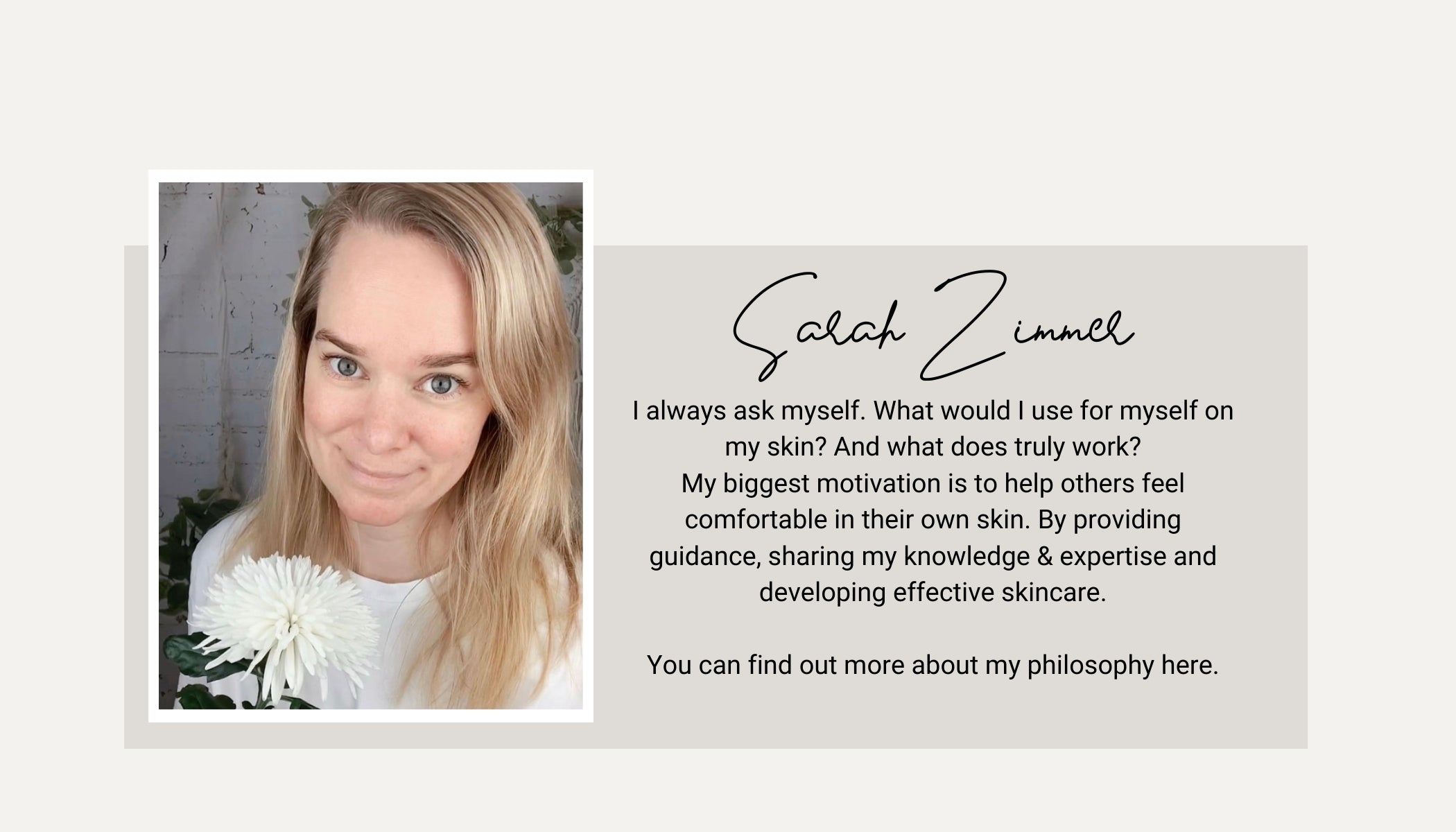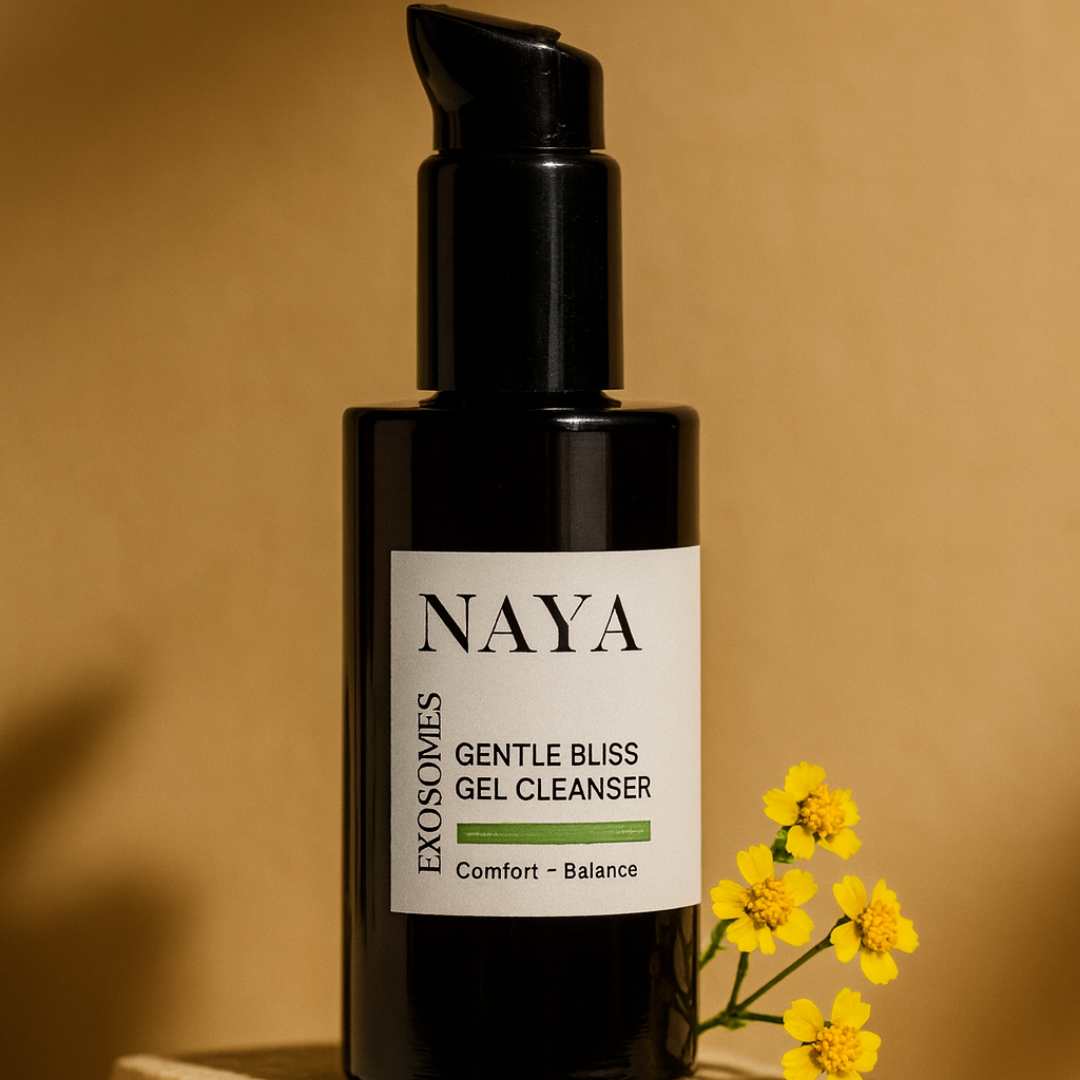Acne: myths, diet and skin care routine
A NAYA customer shares their experience

Acne: myths, diet and skin care routine
"You have acne!" were the words of my gynecologist when I first saw her at age 14. In hindsight, I would call it mildly blemished skin. Still, it bothered me when I looked in the mirror every day. But to avoid the problems, she prescribed me the pill. How could it be otherwise? No big educational talks. However, my skin promptly got better. I had beautiful smooth skin and my classmates really envied me. I wasn't completely carefree, though - side effects like PMS and lots of mood swings made themselves known. I decided to stop taking the pill in 2018.
As a result, my skin was getting worse and worse by the month.
I was at a loss, overwhelmed, looking for solutions while trying not to pay too much attention to the issue. The state of my skin changed not only my appearance, but also my self-confidence - I no longer dared to go out on the street without make-up and paid meticulous attention to care, food and other circumstances to which I attributed my skin problems. Today I see the whole thing a little more relaxed. It is what it is - and I do my best. However, it scratched at my self-confidence so much and prevents me from enjoying life, being myself and moving forward in professional and personal matters. It makes me a person I don't want to be - a weak, outgoing version of myself plagued by self-doubt.
Various unsuccessful self-attempts against acne
For hours I browsed various forums and blogs to find a natural, efficient and as fast as possible solution to my problem - unsuccessfully I spent several hundred euros on cosmetic products, nutritional supplements and doctor's visits. Either it really didn't do anything, or I was too impatient to wait months for a change. The problem with selfies: Everyone wants to help you. And I don't mean that ungratefully! But I've been so guided by other people that I haven't really been able to give any of these tips my time and full attention.
What is acne, anyway?
Acne is an inflammatory change of the sebaceous gland unit or follicle. It is one of the most common skin diseases worldwide.
Acne occurs primarily on areas of the body that are characterized by a high density of sebaceous glands. These are: Face, back, chest, neck and décolleté.
It is estimated that approximately 85% of all adolescents are affected by acne.
Today, there is talk of an epidemic of acne in late adolescence. Even if other manifestations of acne can be identified, it is especially the adolescent acne and adult acne that are associated with a number of additional problems.
This is because the condition manifests itself not only on the skin. Rather, acne is associated with high psychological distress and depression. Studies report that even mild acne can have an impact on quality of life, self-esteem and psychological well-being.
Acne scars and what is behind them
-
MELASMA
Melasma is an excessive concentration of melanin in one area, causing its darkening. The discoloration is flat, brown and irregular, often symmetrical (approximately in the same place on both temples). Concentration of melanin in most cases involves melanocytes in the epidermis. However, there is also a mixed case where melanin deposition occurs simultaneously in the epidermis and dermis.
Melasma is caused by a combination of two factors: 1) increase in estrogen levels (either during pregnancy or by taking the pill) and 2) sun rays.
-
PIH - POSTINFLAMMATORY HYPERPIGMENTATION
Postinflammatory hyperpigmentation is a discoloration of the skin that has occurred as a result of an inflammatory reaction or physical injury to the skin. Most often PIH is mentioned in the context of acne. However, it can also be an allergic reaction including contact dermatitis, psoriasis, neurodermatitis, various infections, burn, cosmetic procedures such as peeling, laser, etc. What does skin inflammation have to do with discoloration? In the course of inflammation, basal keratinocytes are destroyed. This in turn causes a flow of large amounts of (epidermal) melanin into the dermis. At this point, a blue-gray discoloration develops. Epidermis then responds by increasing melanin synthesis in melanocytes. The melanin is then transported upward to keratinocytes and causes brown skin discoloration.
My success: NAYA
I sat down at the end of the year 2022 more and more with the topic of cosmetics and especially natural cosmetics. I subscribed to various Instagram pages and spent the evenings not in front of the TV, but researched more and more on the net. Surely there had to be a solution to my skin?
I became aware of the brand NAYA by chance and read through blogs and studied their products.
Sarah put together a care program for me after I described my problems to her. However, it was by no means that she only wanted to sell me her products, but advised me on nutrition and care in general.
Change of diet
However, I changed my diet to vegetarian in 2020 and am trying to eat more and more vegan. Sarah recommended that I eat a diet rich in antioxidants. In the context of non-enzymatic defence, antioxidants work as a protective system (radical scavengers). Antioxidants that occur naturally in food include.
- Vitamin C,
- Vitamin E,
- carotenoids,
- flavonoids and other secondary plant compounds.
In addition, the body is protected from these harmful substances by certain enzymes (enzymatic protection system). The trace elements selenium, zinc, copper and manganese are important for the enzymatic defence. In particular, plant foods such as fruits and vegetables, whole grains, legumes and high-quality vegetable oils and nuts are rich in antioxidants. Especially "traffic light" fruits and vegetables like spinach or grapes , tomatoes, berries, carrots, apples are recommended.
I also made sure to take supplements like vitamin B and D in tablet form, due to my vegetarian diet. I also had good experiences with brewer's yeast tablets and supplemented the NAYA care with a healing mask. But which products did Sarah recommend for my skin?
My care with products from NAYA
Cleansing Oil
I cleanse my face daily in the evening with Everyday Cleansing Oil. Cleansing in the evening with an oil-based base is just hugely important to get all the dirt and SPF off from the day. When I think about how I used to just wipe my face with an inexpensive makeup remover wipe, it makes me feel very different....
Retinol
Sarah told me that skincare with retinol is very good. Sarah's products are all enriched with Cacay Oil, which is considered a kind of natural retinol. I used to take care of my face 2x a week with the Retinol Cell Renewal. Retinol gives your skin an even complexion and reduces pimple marks.
Niacinamide and Vitamin C
I also used the Defence Booster 3 times a week and mixed it into my evening care. This one is more enriched with Niacinamide and Vitamin C. Niacinamide regulates sebum production and can help mattify the T-zone. In addition, the vitamin has an antibacterial effect and can provide a more even complexion with significantly fewer blemishes in the long run.
Hyaluron and SPF
Many always say not to moisturize oily and acne-prone skin, which is absolute nonsense. I used the Hydration Mask when I felt like it, which is more enriched with Hyaluronic Complex. My skin feels so velvety soft after application - I am thrilled. I also wear an SPF with SPF 50+ EVERY DAY. This is just so so important. We are exposed to UV rays every day that are harmful to our skin.
My skin is certainly not perfect yet and I too still have pimple breakouts when I'm stressed, however, my skin texture in general has gotten much better and the pimple marks have receded as well.
If you have any questions, please contact Sarah, she will be happy to help you.
3 myths around acne:
Myth #1: Toothpaste works against pimples.
No! The myth that toothpaste dries out pimples is unfortunately not true. The menthol it contains has a cooling and antiseptic effect, but as soon as you take the paste off, the pimple may crack and become even more inflamed. Plus, the ingredients it contains will upset the skin.
Myth No. 2: Sun helps with acne
Please do not lie down in the direct sun or under the solarium because of your pimples! Firstly, the sun dries out the skin, which initially also dries out the pimples. Afterwards, however, the skin can react all the more irritated because it becomes more horny as a reaction to the stressful UV radiation. On the other hand, pimples and skin redness are less noticeable with tanned skin. The acne is therefore only apparently alleviated.
But if you still want to go out in the sun, please don't forget your sunscreen.
Myth No. 3: Washing a lot helps against pimples
This is not entirely true. Sure, you should wash your face gently with water every morning and remove makeup, dirt and SPF from your face with a mild cleansing oil in the evening. But if you clean your face too often with aggressive cleansers, your skin may dry out. This causes your skin to produce even more sebum and clog your pores - pimples and blackheads are the result.
Myth #4: Squeezing pimples reduces acne
Pimples should definitely not be squeezed! Squeezing the pimple creates an open area on the skin, which can allow germs to enter and worsen the inflammation. This can cause small scars to appear on the skin.
Myth #5: Acne is made worse by sweating
This is also not entirely true. Sweating alone does not make acne worse. The combination due to tight-fitting clothes and lack of cleaning the skin afterwards can cause pimples. Please cleanse your face and skin after every workout. Feel free to use our Hydration Mask or Aura Essence to restore moisture to your skin after sweating.
Explore the products that will support your skin need: Your Skin.













Leave a comment